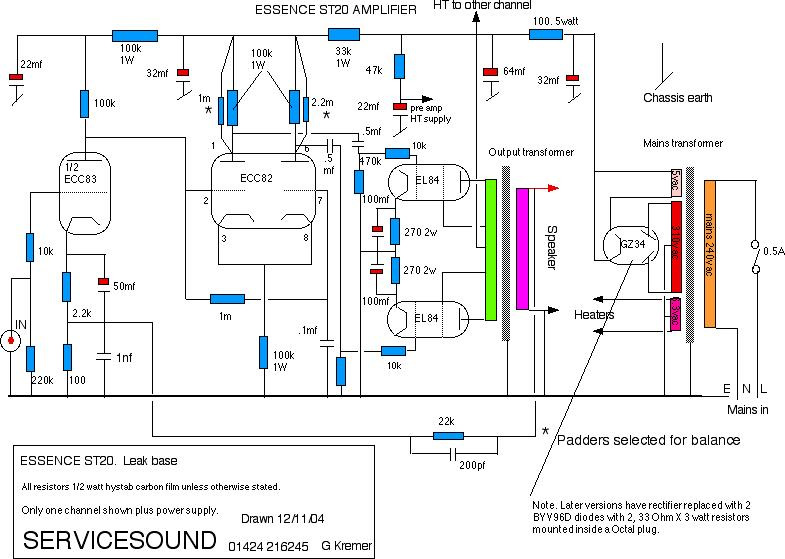(by Geoff Kremer, 2006)
The modifications explained here dramatically
improve the amplifier's performance in all areas.
The input stage has been altered to direct
coupling to improve frequency response and phase characteristics
whilst the HT supplies to these, and the driver stages, have
been separated and individually de-coupled to help prevent
crosstalk between the channels and to improve the HT stability.
The effect of the modifications is to open
out the sound stage and extend the bass response whilst keeping
the sweetness of the mid and top ranges. During development
great attention has been paid to keeping the distortion levels
as low as possible, with a new set of "run in" valves
(tubes), the Total Harmonic Distortion is 0.08% at 8 Watts
driven at kHz into a 10 Ohm load while the frequency response
is 20Hz to 40KHz.
The amplifier is unconditionally stable under all conditions.
Solid state diodes have been used to replace
the GZ34 and can be built into an Octal plug. The reason for
this is that the mains transformer is known to be marginal
in its ratings, using diodes does away with the need for the
1 Amp heater current drawn by a valve rectifier.
The additional components can be fitted
to two small tagboards attached to the main assembly panel.
The cost of the components needed for these modifications,
carried out on a freshly renovated ST20, should be no more
than £20:00 and it must be emphasised that the amplifier
must be in perfect working order.
The two "padder" resistors added
across the anode loads of the phase splitter are nominal values.
These will be OK and can be fine tuned for the lowest distortion
figures using a distortion analyser. The 0.5mf coupling capacitors
feeding the EL84 valves need to be of good quality Mylor types
but you don't have to spend a fortune on 'paper in oil' types,
it's a waste of money and will not give any benefits. The
0.1mf grid de-coupling capacitor, connected to pin 7 of the
ECC82, must be of a very good, low leakage type.
Valve replacements:
6N14N-EB valves are used in place of the EL84. These are Russian
military spec direct replacements.
6N2P in place of the ECC83. This is not a direct replacement
as the heater connections are slightly different. Pins 4 and
5 are the heaters with pin 9 being a screen and should be
earthed.
These modifications can also be applied
to the TL12 and TL12 Plus but the EF86 valve will need to
be replaced with an ECC83 using just one half. The other half
of the valve can be left unconnected.
The before and after listening tests,
by many people, confirm that these modifications can transform
the Leak Stereo 20 into a superb amplifier capable bettering
the performance of many that are currently made.

Above: Geoff's circuit diagram for his
modified Stereo 20
Below: the underside of a modified Stereo
20

|
